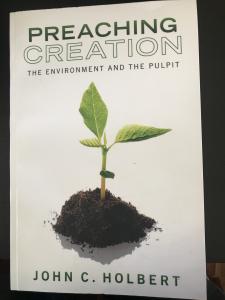 For those of us who have dedicated our lives to understanding who God may be and to communicating that understanding to others, the age of COVID-19 presents us with the enormous task of thinking about God clearly so as to speak about God intelligibly to other persons who seek to approach God with a faith that matters deeply to every seeker after the truth. It is plain to me that the age of a pandemic raises huge questions about the various ways that faithful people have attempted to understand their God while facing such painful realities about themselves and their fellow humans. I want to try to suggest a few of those ways of understanding, and indicate where my own thinking has gone when it comes to the question of who God is.
For those of us who have dedicated our lives to understanding who God may be and to communicating that understanding to others, the age of COVID-19 presents us with the enormous task of thinking about God clearly so as to speak about God intelligibly to other persons who seek to approach God with a faith that matters deeply to every seeker after the truth. It is plain to me that the age of a pandemic raises huge questions about the various ways that faithful people have attempted to understand their God while facing such painful realities about themselves and their fellow humans. I want to try to suggest a few of those ways of understanding, and indicate where my own thinking has gone when it comes to the question of who God is.
Through the three millennia of Israelite/Jewish faith and the two millennia of Christian faith, many believers took their cues about God from the sacred texts of the Bible. From the multiple stories, poems, aphorisms, parables, and other literary genres, the conclusion was often drawn that the God of the Bible was either completely incomprehensible or was unchangeable, infinite, impassible, omniscient, and omnipotent, a being who demanded full and unquestioned obedience. Of course, it did not take very long for questions to be raised about these powerful conclusions. While there were those who determined that God could not be understood but simply worshipped and held in awe, many others who found the symbols expressed in the words listed above, beginning with “unchangeable,” were increasingly dissatisfied with those words for two basic reasons: certain biblical passages did not comport with the meaning of the symbols (for example, see those passages where God obviously changes the divine will along with the book of Job that consistently and persistently asks the sharpest questions of the nature of God and comes up with a very different understanding of God) and the words themselves raised too many questions when faced with serious life dilemmas, like a viral pandemic. Because, if God is truly omniscient, all-knowing, then what possible meaning could the existence of a such a virus have as an expression of God’s omniscience? And if God is truly omnipotent, then why does God not simply wave the divine hand and sweep the virus away? Why did God allow the Shoah, popularly known as the Holocaust, perpetrated by the Nazis against the Jews, if God is all-powerful?
As theologians pondered these problems through the years, at least three general responses were formulated. These three hardly exhaust the vast store of reflections on these very central issues, but they do offer categories that might prove useful as all of us search for the God we need at this special time.
1. All symbols used for God, whether the words listed above, or images like love or compassion or mother or father or any number of other symbolic designations used over the centuries, were never intended to contain theoretical value, but are merely ways to express certain attitudes or feelings. In other words, God is not actually a mother, but the symbol, “mother,” proclaims how the worshipper symbolically envisions God, through a symbol that is supremely meaningful and important. Of course, if your own mother was not the nurturing, loving, welcoming presence that may be the common understanding of the symbol in our culture, such a symbol will not work for you as helpful for accessing God. That is true for any symbol you might choose.
- Some imagined that religious symbols are grounded in revelation, and only faith in that revelation may serve as the basis for belief. This is a very common response of Protestant theologians, who wish to guard against the very subjective idea of human feelings and attitudes as the source of belief, placing my own humanity at the center of faith, whereas the true source of faith can only be God who is revealed to us, not appropriated by us in our humanity. We must have faith in the revelation of God as God makes that possible, not rely on our individualistic feelings to approach our God. Martin Luther’s constant demand of “justification by faith alone” is the very hallmark of this viewpoint.
- Religious symbols are images taken from one sphere of historical experience and used to relate oneself to the divine mystery that can be known in no other way. In this approach the Bible and its ancient symbols becomes the entrée into the mystery of God; without the sacred text God is inaccessible.Each of these reflections bears elements of value and has served millions of faithful people over the years, and I do not denigrate them at all by saying that they do not anymore work for me. Since I first read Charles Hartshorne in my college days, and heard him speak then, I have found what has come to be called panentheism a helpful way to think about God in this unique time or at any time. Panentheism attempts to reconcile the twin poles of Pantheism that identifies God and the world as a whole, and Deism, that completely separates God from the world. Panentheism argues that the world is included in God’s very being, rather like cells are included in a larger organism. However, crucially the world in no way exhausts God’s being or God’s creativity.

One might use the analogy of a human being. Each person is both a summary of all her experiences and parts and yet more than both of those; no person can be completely summarized as a collection of her experiences and parts. In similar fashion, God possesses all of finite being as a part of God’s being and experience, but there remains a part of God that transcends all that. This two-poled idea of God rejects the view that God is completely independent of the world and thereby modifies those classical divine attributes of impassibility, omniscience, and omnipotence. This means that the content of God’s experience quite literally changes, as finite experiences change. God gathers up into the divine self all finite experience, both joyful and painful ones, both darkness and light. Panentheism holds that there is genuine freedom and spontaneity in the world, and as a result it avers that even God cannot know the future; in that sense God is partially temporal as well as divine. Panentheism claims to do the most justice to those absolute and personal symbols of God that have been predicated by theologians over many years of reflection. That means that that basic theological conundrum: “How can there be evil in the world and still affirm the absolute goodness of God?” is addressed in this understanding of God, because God is not all-powerful, but is still deeply and inexorably engaged in the experience of the world—it is finally and completely a part of God. Yet, there is more to God than only our human experience; there is still that part of God that transcends us.
I readily admit that this view may not be at all satisfactory for those who cannot give up the God whom they have known and been taught, that God who is all-knowing, all-loving, all-powerful, and in control of our destinies. For me, in the time of COVID- 19, that traditional God no longer works. I present the panentheistic God as another way to approach God in worship and praise, for that God still loves us and is quite literally suffering with us as we navigate the choppy waters of 2020. This God knows our pain, because in a very real sense God is our pain. And this God knows our hopes, because in a very real sense this God is our hopes. I find great comfort in this view and would be happy to discuss its multiple ramifications with you. I have given only the most basic reckoning of this view of God; there is far more that needs saying. However you experience God, may God carry you through this awkward and horrendous time. May you cling to God as you live your life under threat, and may your God remind you again and again that you live not only for yourself but also for all of your brothers and sisters, all your siblings, around the world, all of whom are a part of God and all of whom are worthy both of God’s love and ours as well.
(Images from Wikimedia Commons)











